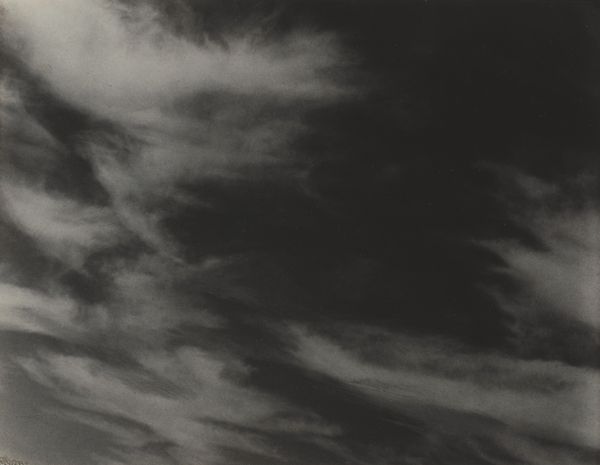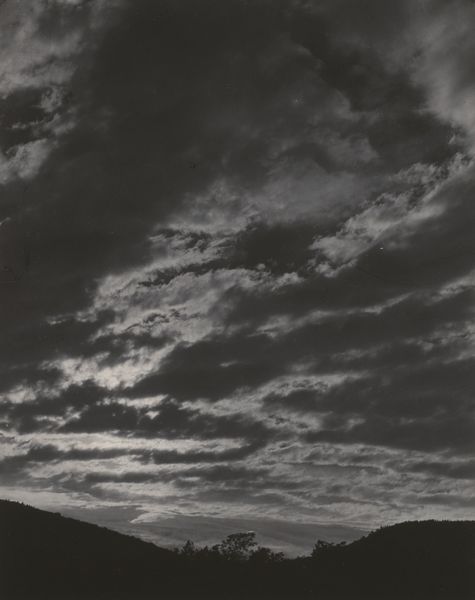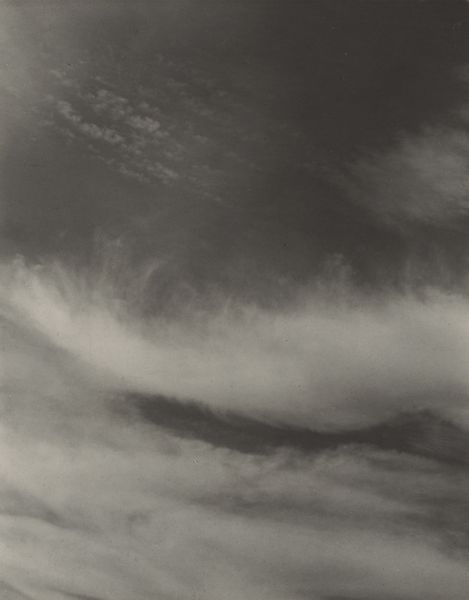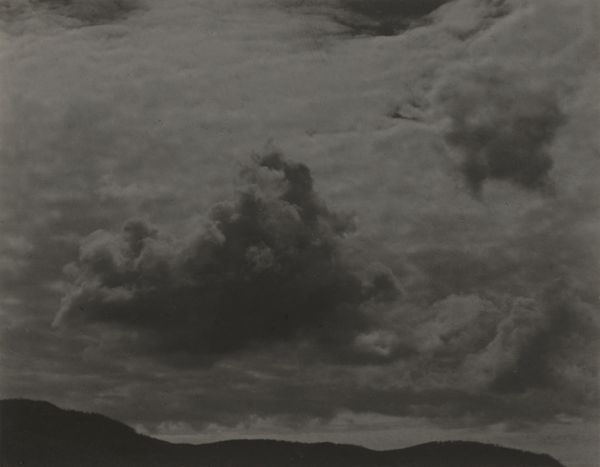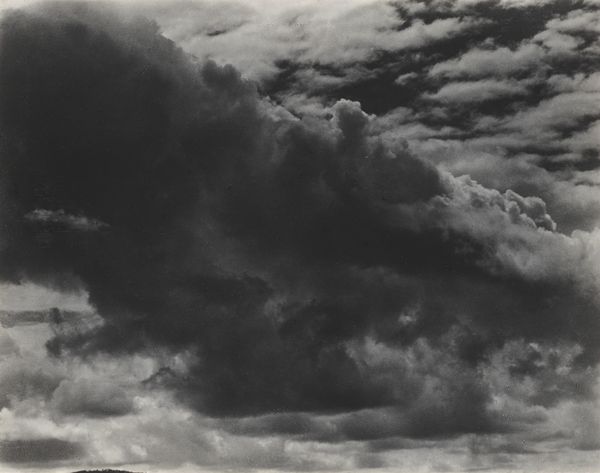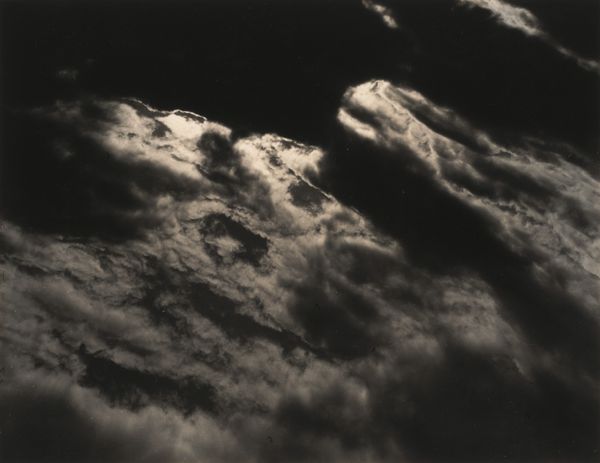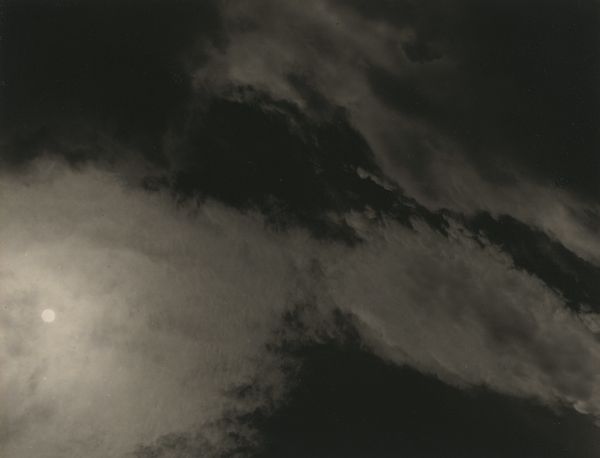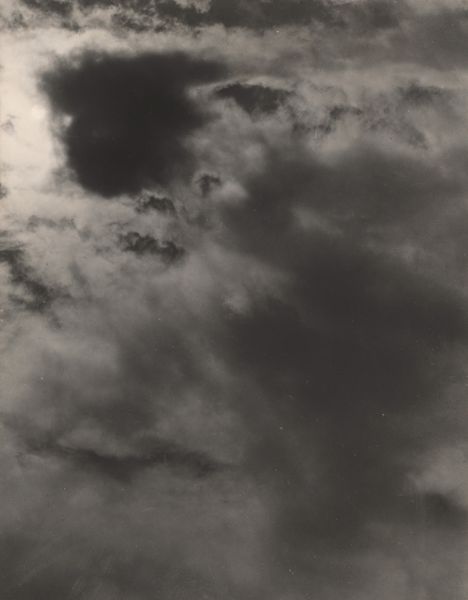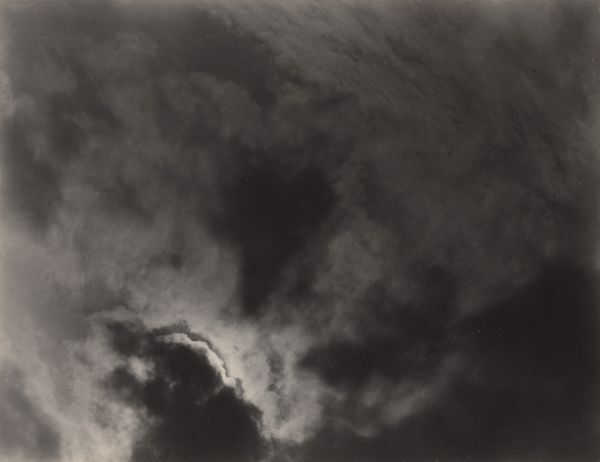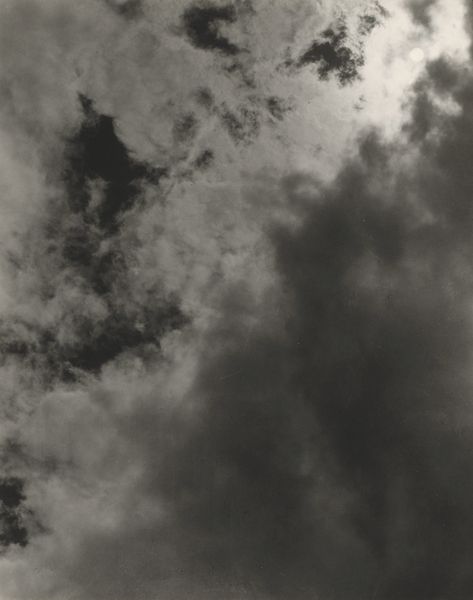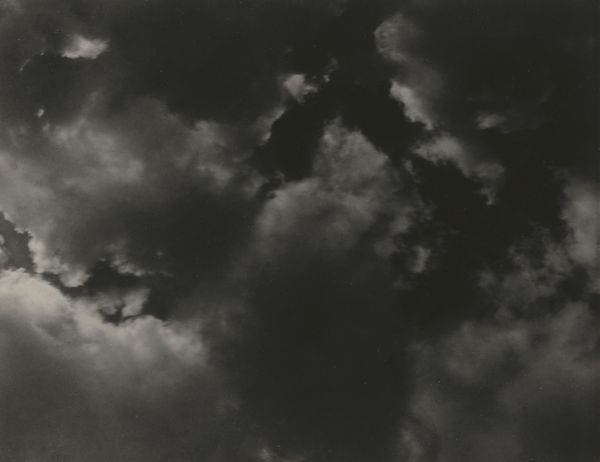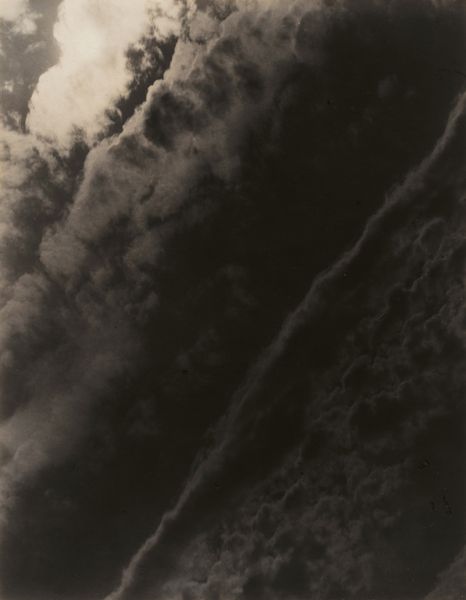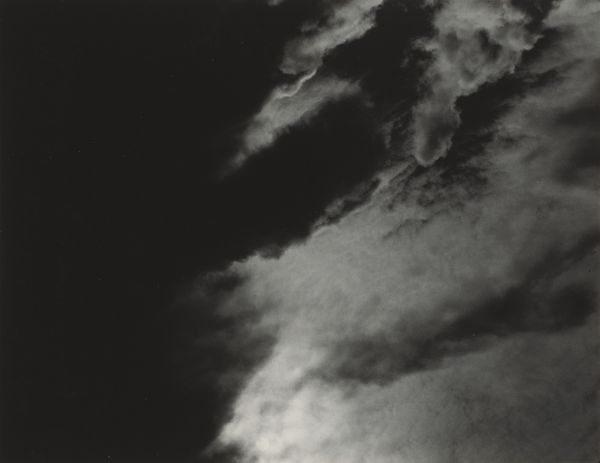
photography, gelatin-silver-print
#
cloudy
#
black and white photography
#
snowscape
#
pictorialism
#
landscape
#
warm monochrome
#
photography
#
low atmospheric-weather contrast
#
gelatin-silver-print
#
monochrome photography
#
gloomy
#
abstraction
#
monochrome
#
monotone photography
#
modernism
#
monochrome
#
shadow overcast
Dimensions: sheet (trimmed to image): 9.2 x 11.5 cm (3 5/8 x 4 1/2 in.) mount: 34.6 x 27.6 cm (13 5/8 x 10 7/8 in.)
Copyright: National Gallery of Art: CC0 1.0
Curator: We are looking at "Equivalent," a gelatin-silver print made in 1926 by Alfred Stieglitz. Editor: It feels like an atmospheric void, those sweeping greys suggesting both density and ethereality. It’s undeniably brooding. Curator: Stieglitz, as we know, was deeply invested in photography as a medium for conveying subjective experience. He believed these cloud studies could stand as equivalents for inner states. What social factors do you feel were in play when Stieglitz claimed a pure subjective landscape for photography? Editor: I am interested in Stieglitz’s means here; it is industrial photography meeting romanticized sky. Gelatin silver prints were being mass-produced by this time and Stieglitz is both rejecting that notion with his expressive, handmade feel and co-opting its modernity. Curator: Precisely! Consider, too, the rise of psychoanalysis during this period, how the external world became increasingly interpreted as a mirror reflecting internal, often unconscious, psychological realities. Was the camera equipped to offer viewers a window into seeing new gendered selves? Stieglitz worked tirelessly to position photography as a fine art on par with painting, imbued with the artist's soul. Editor: The scale is fascinating here. These photographs feel more like minimalist sculptures and almost like Rothko's color field paintings; it also hints at labor and chemical processes required to realize this particular emotional expression. How does the print’s physical construction challenge our traditional separation between the artist's hand and industrial production? Curator: It challenges us to examine that relationship itself! These images prompt us to consider not only Stieglitz's individual consciousness but also the societal values and cultural frameworks that shaped his perspective. His choices of specific clouds and light become deliberate acts of meaning-making that offer ways to confront social ideas that often dictate who gets to be seen and how. Editor: Yes, absolutely. Seeing it this way it challenges the hierarchy inherent in artistic skill versus manufactured product, reminding us to look deeper. Curator: This dialogue deepens my understanding of photography’s claim of its unique role within society, showing that we can claim subjective emotional expression from manufactured products and mass labor practices. Editor: And it’s reinforced for me that paying close attention to materials reveals a history of production, use, and value all informing art making as material investigation.
Comments
No comments
Be the first to comment and join the conversation on the ultimate creative platform.
